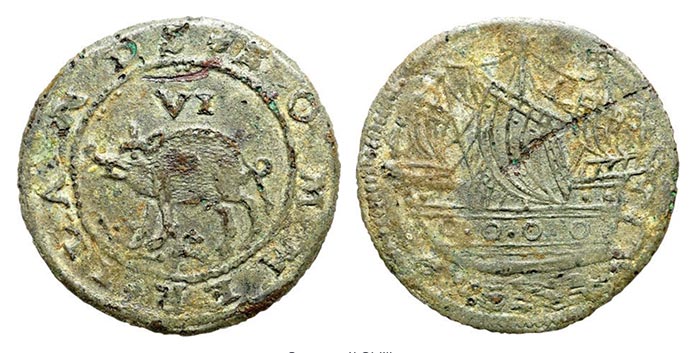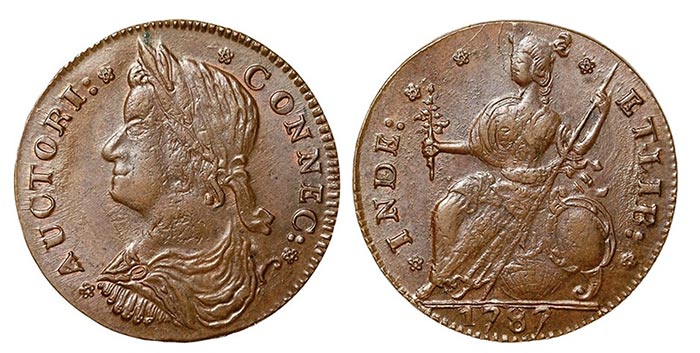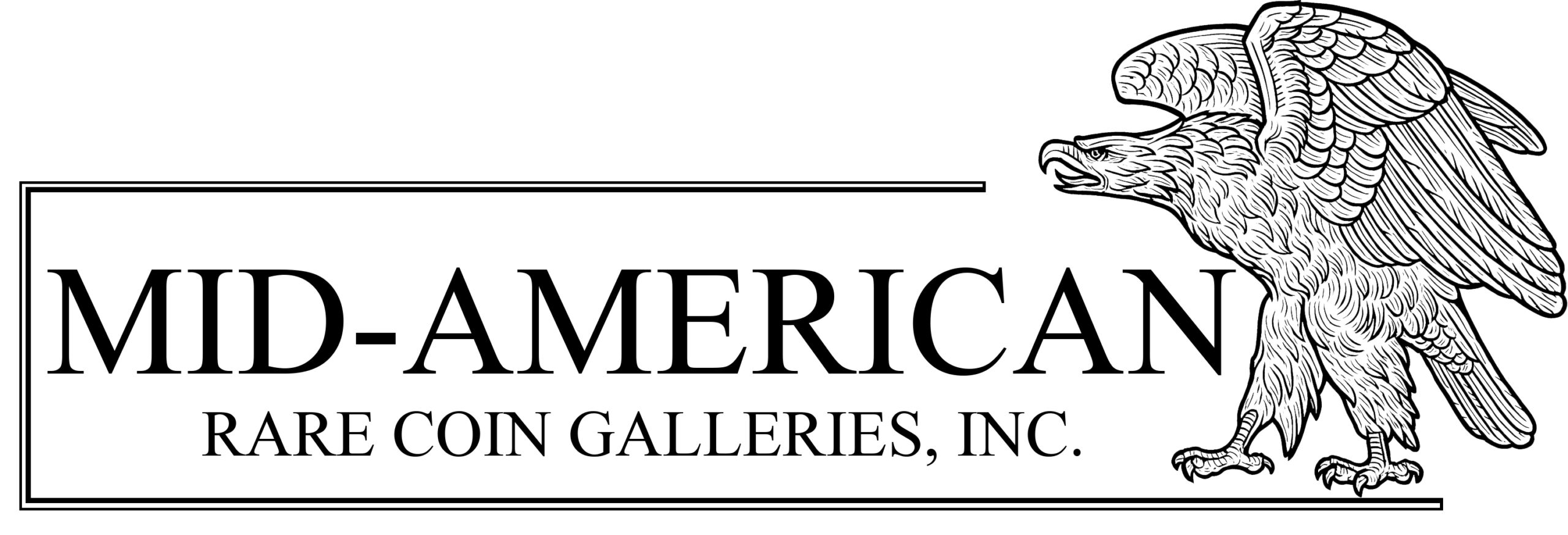Consider Collecting Colonial Coins
A few weeks ago, NGC announced that it had recently certified hundreds of additional colonial coins from the extraordinary collection assembled by Donald G. Partrick. NGC had certified about 350 colonial coins from the collection in 2014, and they were sold at public auction for over $25 million. The centerpiece of the most recent submission is the finest known 1787 ‘EB’ on Wing Brasher Doubloon graded NGC MS 65★. Brasher Doubloons were the first gold coins struck in the newly created United States of America.
Considered one of the crown jewels of American coinage, the Brasher Doubloons were produced by Ephraim Brasher, who is reported to have been a close neighbor of George Washington. Only a few examples are known, including those permanently impounded in museum collections. These coins are rarely offered at auction, with the last one trading for over $4.5 million in 2014.
The Partrick coins that sold in 2014 and the ones selling over the next year are amazing, but out of reach for most collectors. These masterpieces of colonial coinage will garner tremendous media attention, however, and hopefully inspire collectors to consider this interesting corner of numismatics.
Amazing History and Excellent Value
My first trip to the ANA Summer Seminar was in 1974. My instructor that week was Ken Bressett, the editor of A Guide Book of United States Coins (the Red Book). I had decided to take his class on US colonial coinage. It was a subject that I knew very little or nothing about, and Ken did a great job explaining this somewhat-complicated area of the market. Little did I know that over 40 years later, I would take over as the next Senior Editor of the Red Book.
Many people make no attempt to collect colonial coins because they do not understand them. This is a mistake — US colonial coinage is fascinating and represents an excellent value. Very few coins offer such an incredible combination of rarity, historical significance, and affordability. There are many mega-rarities in the colonial series, but there are dozens of issues that can be purchased for well under $500.
As was the case over 40 years ago, Ken Bressett is still one of the best instructors for this compelling area of the market. His work for the Red Book will live on, even though he has retired as Senior Editor. Indeed, the Red Book continues to serve as the best guide for anyone getting started with colonial coinage.
Over the decades, Ken and I the Red Book team have continuously improved the editorial content of the book. We have expanded and improved the colonial section greatly. Most people who buy the Red Book do not realize the incredible information this book contains, and the section on early US coinage is probably the best part of the Red Book.
In recent years, several pages have been added to the colonial section discussing “Foreign Coins in the Colonies”. Most do not realize that foreign coins were considered legal tender in the US until 1857. Evidence of this is easily proven, however, by the large amounts of this material found in shipwrecks. An abundant number of foreign coins were found in the treasury of the SS Central America.
This section has listings for the following coins, which traded heavily in day-to-day commerce in the early years of our nation:
- Spanish-American Coinage of the New World (Cob and Pillar types)
- Netherlands “Lion Dollars”
- French Silver Coinage
- English Silver Coinage
Then come the first true colonial issues, struck specifically for use in the colonies.

The Sommer Islands Coinage
The Red Book coverage of US colonial coinage starts with the Sommer Islands (Bermuda) coinage. The Bermuda Islands were named for Juan de Bermudez, who is believed to have shipwrecked there in 1515. He left behind a few hogs, and a hundred years later, the island was overrun with the animals. Thus, the first coins struck for the English colonies in the New World, issued in about 1616, feature a hog as the main device and became known as Hogge Money or Hoggies.
The coins were made of brass or copper and lightly silvered. Most found today are low quality, but they are among the rarest and priciest colonial coins. Their amazing history and scarceness are what make them special.

New England Coinage
The 1652 New England coinage is covered next in great detail. The series starts with the amazingly simple NE Threepence, NE Sixpence and NE Shilling.
The latter coin is a great illustration of why there has never been a better time to buy colonial coins.
For decades, there was a relatively small group of devoted collectors of colonial coinage. These individuals amassed amazing collections of US colonials. They competed with each other when a great collection sold, and prices reached lofty heights when they butted heads at auction.
In the last 10 years or so, several of these collectors have died, or have decided to sell their lifetime holdings. These include such famous names as John J. Ford, Eric P. Newman, Partrick, and several others. The market could not absorb so much material, and prices have fallen on most issues. Nice examples of the famous 1652 NE Shilling have dropped from about $400,000 to under $250,000.
As mentioned above, several years ago, Heritage Auctions began selling the Donald G. Partrick collection of colonial coinage. This collection is one of the finest ever assembled. After the first installment, Mr. Partrick decided to withdraw his consignment and wait for a better market. Mr. Partrick died earlier this year, and his heirs have decided to sell the remaining coins from the collection.
Savvy collectors and investors should consider this amazing buying opportunity. When the coins from all of these auctions are fully absorbed by the market, finding important US colonials will become a much more difficult task.

1787 Connecticut Coppers
There are many ways to collect US coinage from before the advent of the United States Mint in 1792. Some with deep pockets and great ambition use the Red Book as their guide and purchase as many as possible. Others concentrate on issues of interest. Several states are represented in these series, including New York, Connecticut, New Jersey, and Vermont. State coinage is among the most affordable of the series, with many issues available for around $100 in low grades.
Developing a Collection of Colonial Coins
Truly, the possibilities for collecting colonial coinage are endless.
You can also still attend an ANA Summer Seminar on colonial coinage. This would be a great way to start your numismatic journey collecting colonial coinage.
It would also be a great idea to seek the advice of an expert in the field who could share their many years’ experience and help you source material. There is also a Colonial Coin Collectors Club (C4) that you could join once your interest in the field develops.
Whitman Publishing also recently released the second edition of the Encyclopedia of Colonial Coinage. This in-depth study of the series is highly recommended. I worked carefully with the best experts in the field to assemble the most up-to-date prices for this expanded study of colonial coinage.
When doing price research for the Encyclopedia of Colonial Coinage, the rarity of attractive, problem-free examples in every series became apparent to me. In most cases, colonial coinage experienced considerable abuse from circulation or environmental damage over the centuries. Finding coins with nice planchets, color, and without problems is the exception. As with any coins that you collect, be quality conscious, and you will be rewarded when the time comes to sell your collection.
Colonial coinage may be somewhat complicated and not the easiest to collect, but the potential rewards will justify the efforts.
